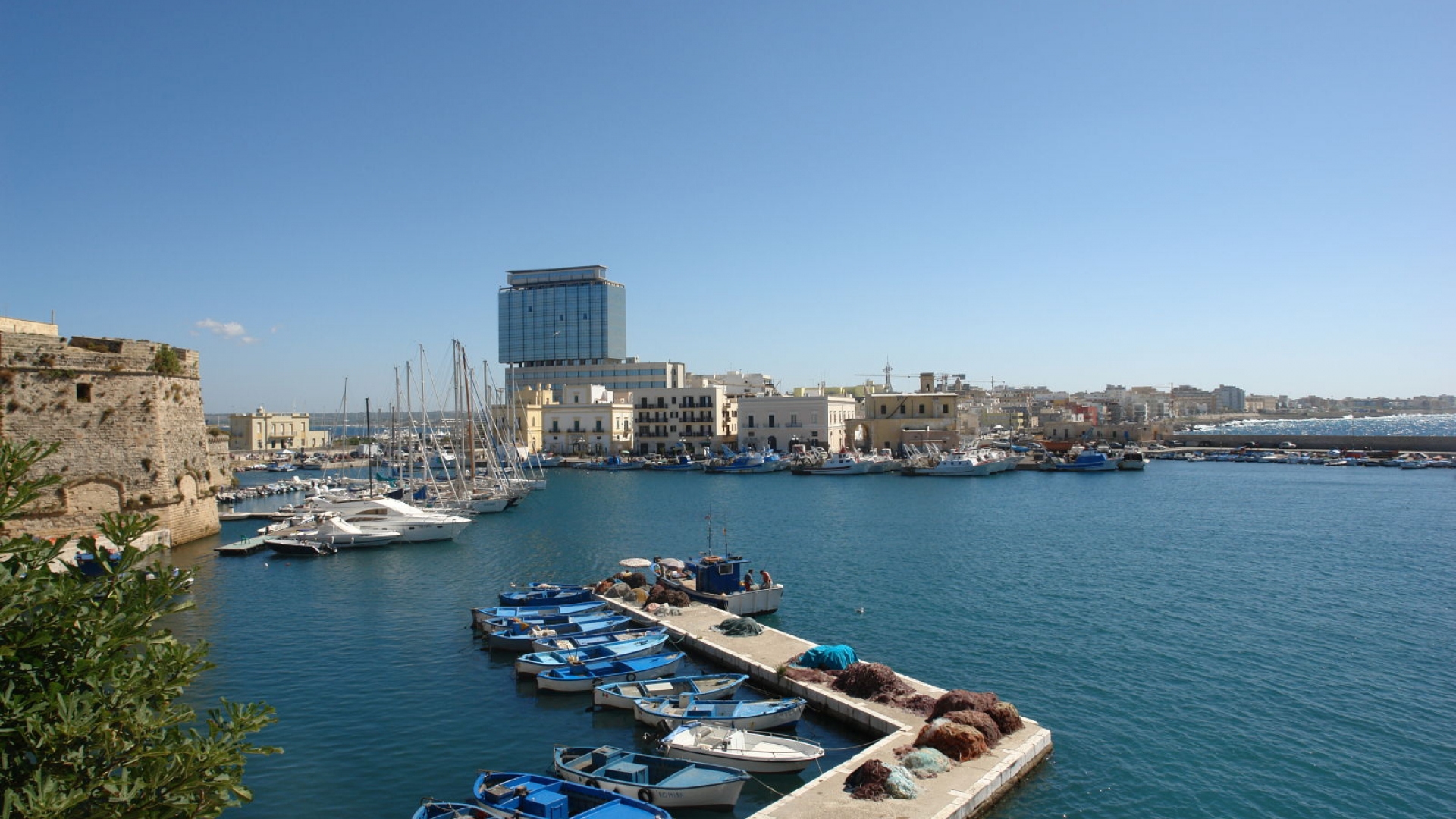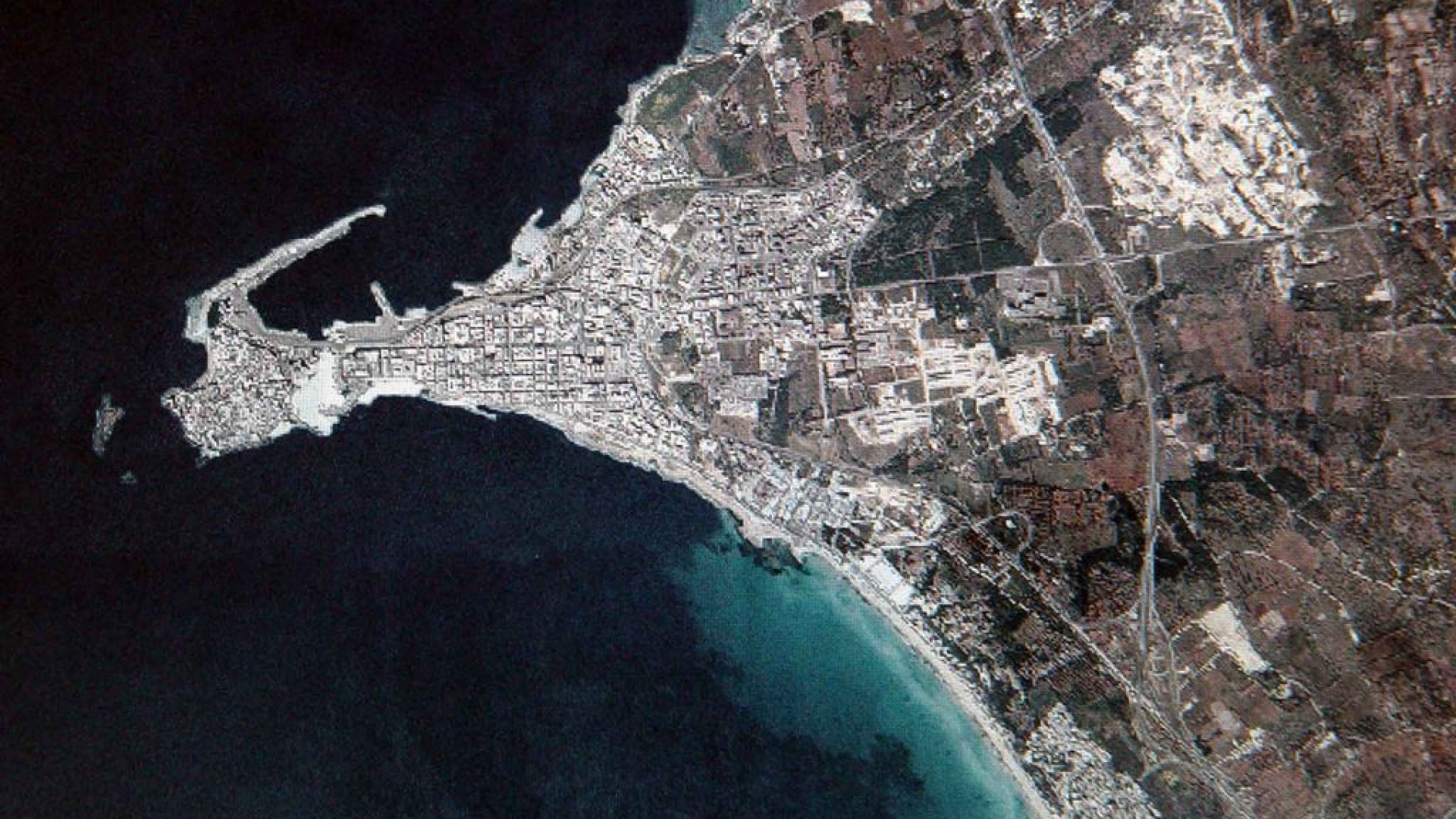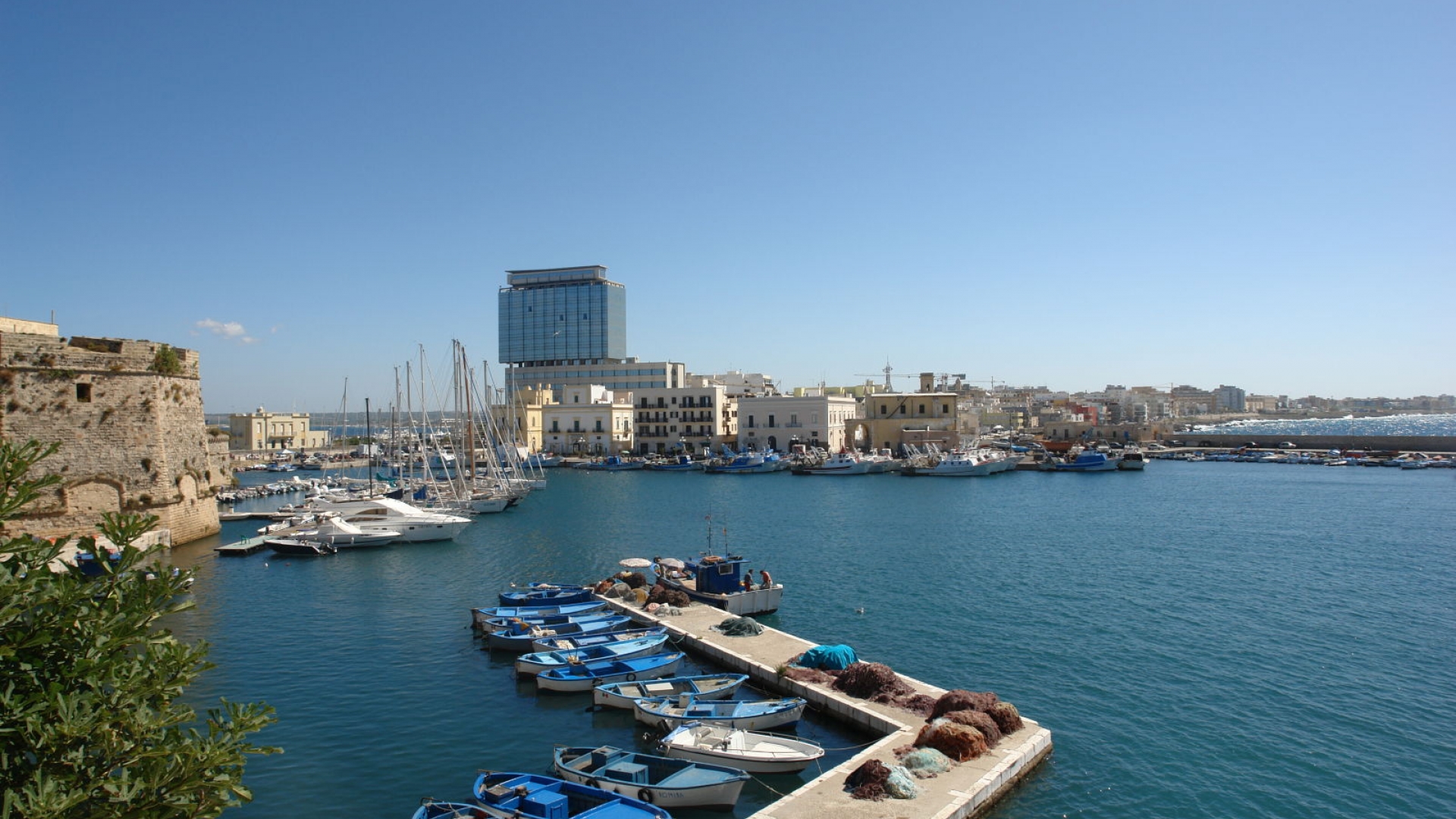Gallipoli
La città di Gallipoli è situata sulla costa occidentale del Salento, affacciata sul mar Ionio. Si presenta nettamente divisa in due parti rispettivamente chiamate Borgo e Centro Storico, unite tra loro da un ponte. Il Borgo corrisponde alla parte moderna della città ed è situato più ad est su di un promontorio, mentre il centro storico si trova più ad ovest su un' isola di origine calcarea. La parte antica di Gallipoli è circondata da bastioni e mura di difesa lunghe circa un chilometro e mezzo, costruite con lo scopo di difendere la città dagli attacchi dei nemici provenienti dal mare.
L’assetto urbanistico del centro storico è caratterizzato da vie strette e tortuose, secondo uno schema risalente alla prima metà del 900 d. C., quando la città fu conquistata dai Saraceni. Questa parte, più antica, è a sua volta suddivisa in due zone separate dalla strada principale, via Antonietta De Pace. L’isola su cui sorge il centro storico era un tempo unita alla terraferma da un lembo di terra naturale, denominato istmo, che rappresentava l'unico passaggio per accedere alla città.
The town of Gallipoli is situated on the west coast of Salento, shows on the Ionio Sea. It is divided into two parts, respectively called Borgo and historical Center, linked by a bridge. The Borgo corresponds to the modern part of the city and is located further east on a promontory, while the old town is located to the west of an island of calcareous origin. The old part of Gallipoli is surrounded by ramparts and defensive walls around one and a half kilometers, built with the purpose to defend the town from enemy attacks from the sea.
The urban layout of the old town is characterized by narrow winding streets, according to a plan from the first half of the 900 d. C., when the city was conquered by the Saracens. This part, the oldest, is in turn divided into two separate areas from the main street, Antonietta De Pace road. The island on which stands the old town was once joined to the mainland by a natural strip of land, called isthmus, which represented the only passage to enter in the town.
The town in the province of Lecce has just over 22,000 in habitants, but it has become a popular destination in recent times thanks to the beauty typical of the Mediterranean landscape and thanks to its shores: both rock and sand.
According to tradition, the name derives from two Greek words "Kale" and "Polis", or "beautiful city."
The town is divided in the new town and the old town. The historic center of Gallipoli is comparable to a small island laying on the water and linked to the new town by a bridge.
You can’t miss the old town: rich and old buildings, churches in the Baroque style, small shops who sell healthy food, it was built by the Greeks as a labyrinth where all the streets are crossed into one another.
The Old Town is surrounded by the sea and the port, to the left of the bridge we find the "Rivellino" castle built with the purpose to defend the town from enemy attacks from the sea.
Inside the old town there is a small beach called of “Purità” Beach, and one of the church just above the beach take is name.
The Saint protector of Gallipoli is Saint Cristina and every 24 july is celebrated with processions, illuminations and fireworks.
But Gallipoli is not just history, culture and art. There is the sea (and not casually the other name of the city is that of "Pearl of the Ionio Sea"): a blue immaculate blankets and velvety covering the south coast, mainly sandy, for about twenty kilometres and extends until Rivabella neighbourhood. There is nature: pine trees and typical Mediterranean plants surround the beaches.
In Gallipoli you can admire the Greek fountain - dating from the 16th century - located at the beginning of a stone bridge connecting the new village with the old town, - dating from the 16th century - recently restored on which are depicted in the bas metamorphosis of mythological characters.
Gallipoli also has numerous churches, (many of which belong to each one of the confraternities of arts and crafts representing the town: fishermen, carpenters, nobles, etc ...) including the Cathedral of Sant'Agata, maximum expression of baroque architecture the church of St. Francis of Assisi, where the statue of the "Maladrone" is preserved (as it is called in Gallipolino dialect) in the altar of the crucifixion; the "bad thief" crucified next to Jesus, is a wooden statue of great artistic value, which face is characterized by a wry grin, that looks so amazingly real that the statue was defined by Gabriele D'Annunzio, in one of his written, as a masterpiece of "horrid beauty."
Gallipoli today, has become one of the most important tourist cities of Salento and surely of Italy, giving more and more importance to tourism, without forget the history and traditions of the people of Gallipoli.
Gallery
Lido San Giovanni
The Lido San Giovanni is one of the most important Beach Resorts of the Puglia in the South of Italy. The structure, built in the 60s, includes several changing rooms and apartments located on the private beach, divided into studio flats, two-rooms and three-rooms as well as several food services and two bars.
REFRESH THE BLOG
GET IN TOUCH
- Lungomare G. Galilei,
73014 Gallipoli, LE - Phone: +39 0833 292634
Fax: +39 0833 292636 - Email: info@lidosangiovanni.it













